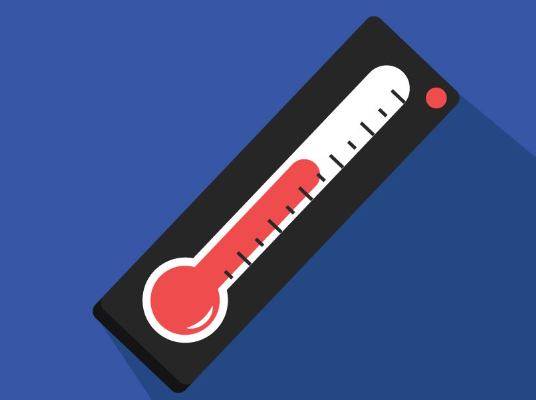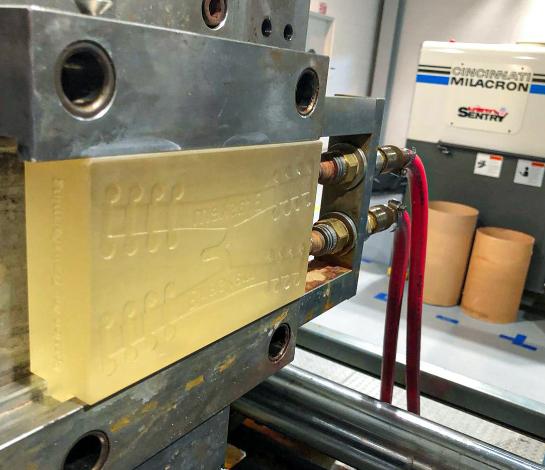The temperature for low pressure injection molding typically ranges from 180°C to 220°C.
Low Pressure Injection Molding: An Overview
Definition and Basic Principles
Low Pressure Injection Molding (LPIM) is a manufacturing process that involves injecting molten material into a mold at lower pressures than traditional high-pressure injection molding. The key advantage of this method is the reduced stress on the mold, which allows for the use of less robust materials and simpler mold designs. LPIM typically operates at pressures ranging from 20 to 500 psi, significantly lower than the 10,000 to 20,000 psi used in high-pressure methods.

This technique is particularly suitable for encapsulating delicate electronic components, as it minimizes the risk of damage. Common materials used in LPIM include polyamides and polyolefins, chosen for their excellent flow characteristics and thermal stability.
Comparison with High Pressure Injection Molding
LPIM differs from High Pressure Injection Molding (HPIM) in several critical ways:
- Pressure and Stress on Molds: HPIM involves injecting material under high pressure, which can create stress on the molds and require more robust and expensive mold materials. In contrast, LPIM’s lower pressure reduces mold wear and extends mold life.
- Cost and Efficiency: LPIM is generally more cost-effective due to lower operational costs, including reduced power consumption and less wear on machinery. For example, LPIM machines consume approximately 50% less energy than HPIM machines. This reduction in power usage translates to significant cost savings over time.
- Mold Design and Material Choices: LPIM allows for simpler mold designs, which can be advantageous in rapid prototyping and short-run production. The process is also suitable for a broader range of materials, including thermally sensitive compounds.
- Quality and Application: LPIM is known for producing parts with minimal internal stresses and higher consistency in material properties. This quality makes it ideal for delicate or intricate components, such as those used in electronics.
- Speed and Productivity: While LPIM may have a slower injection rate compared to HPIM, it compensates with faster setup times and quicker mold changes. This can lead to increased overall productivity in certain manufacturing scenarios.
Key Parameters in Low Pressure Injection Molding
Material Selection and Properties
Selecting the right material is crucial in Low Pressure Injection Molding (LPIM) for achieving desired product quality and efficiency.
Thermal Stability and Flow Properties
Materials with high thermal stability and good flow properties are preferred in LPIM. Polyamides and polyolefins, for instance, maintain stability at temperatures ranging from 180°C to 220°C, ensuring smooth flow without degradation.
Cost-Effectiveness and Performance
Cost-effectiveness is a key consideration. Materials like thermoplastic elastomers offer a balance between performance and cost, often priced between $2 to $5 per pound. The choice of material significantly affects the overall production cost, especially in large-scale operations.
Material Longevity and Quality
Materials in LPIM also need to ensure longevity and consistent quality of the final product. This is crucial in industries where product reliability is paramount, such as automotive and medical devices.
Machine Setup and Configuration
Machine Power and Efficiency
LPIM machines are designed for energy efficiency. Typically, these machines consume less power, approximately 30-50% less than high-pressure injection molding machines. This reduction in power usage translates to lower operational costs.
Machine Size and Specifications
Machine size in LPIM varies based on the product size and volume requirements. Smaller machines may have a clamping force of 5 to 50 tons, suitable for small components, while larger machines can go up to 300 tons for bigger parts.
Cost and Budget Considerations
The cost of LPIM machines depends on their size and capabilities. A small LPIM machine can cost around $20,000, while larger, more advanced models can exceed $100,000. Factoring in the budget for machine purchase is essential for determining the feasibility of a LPIM project.
Speed and Production Capacity
While LPIM machines generally have a slower injection rate compared to high-pressure machines, they offer faster setup times and quicker mold changes, potentially increasing overall
Temperature Control in Low Pressure Injection Molding
Importance of Temperature Management
In Low Pressure Injection Molding (LPIM), precise temperature control is critical for ensuring the quality and consistency of the final product. Proper temperature management affects the fluidity of the material, cycle times, and the overall energy efficiency of the process. Inconsistent temperatures can lead to defects in the molded parts, such as warping or incomplete filling.
Impact on Material Properties
Temperature plays a vital role in maintaining the material’s properties during molding. For instance, temperatures that are too high may degrade the material, while too low temperatures can lead to poor flow characteristics.
Efficiency and Cost Savings
Efficient temperature control also contributes to energy savings. By optimizing the temperature settings, LPIM machines can operate more efficiently, reducing power consumption and thus lowering operational costs.
Typical Temperature Ranges
The temperature range in LPIM varies based on the material used.
Polyamides and Polyolefins
For materials like polyamides and polyolefins, typical processing temperatures range from 180°C to 220°C. This range ensures optimal flow without degrading the material.
Custom Material Requirements
Some custom materials may require specific temperature ranges, which can be determined through trial runs and manufacturer guidelines.
Factors Influencing Molding Temperature
Material Characteristics
The physical and chemical properties of the material, such as viscosity and thermal stability, directly influence the required molding temperature. Materials with higher viscosity may require higher temperatures to achieve proper flow.
Mold Design
The design of the mold, including its size and complexity, can affect the temperature settings. Larger molds may require higher temperatures to ensure even filling.
Machine Specifications
The capabilities and specifications of the LPIM machine, such as its heating power and temperature control accuracy, also play a crucial role in determining the optimal molding temperature.
Process Optimization in Low Pressure Injection Molding
Balancing Temperature and Pressure
Achieving the optimal balance between temperature and pressure is crucial for efficient LPIM processes. This balance impacts the quality of the final product and the overall efficiency of the molding process.
- Temperature: It should be set to ensure the material flows smoothly and fills the mold completely without degrading. Typically, this ranges from 180°C to 220°C for common materials like polyamides.
- Pressure: Lower than in high-pressure molding, typically between 20 to 500 psi. The pressure must be sufficient to fill the mold but not so high that it causes damage or introduces stress into the part.
Effective balancing of these two factors can lead to significant improvements in product quality and manufacturing efficiency.
Mold Design Considerations
The design of the mold in LPIM plays a pivotal role in the success of the production process.
- Complexity and Size: Larger and more complex molds require careful temperature and pressure adjustments to ensure complete and even filling.
- Material Choice for Mold: The mold material should withstand the repeated thermal cycles without deforming or degrading.
Enhancing Mold Efficiency
- Use of Insulating Materials: To prevent heat loss and maintain consistent temperatures throughout the cycle.
- Streamlined Design: Reducing unnecessary complexity to improve cycle times and material flow.
Quality Control and Troubleshooting
Maintaining high quality in LPIM requires constant monitoring and troubleshooting strategies.
- Routine Inspection: Regular checks for wear and tear on molds and machinery.
- Material Quality Checks: Ensuring the consistency and quality of the raw materials used.
Common Issues and Solutions
- Incomplete Filling: Can be addressed by adjusting temperature or pressure, or by modifying the mold design.
- Surface Defects: Often resolved by fine-tuning the temperature or pressure settings.

Case Studies: Low Pressure Injection Molding Applications
Automotive Industry Applications
Low Pressure Injection Molding (LPIM) has become increasingly popular in the automotive industry due to its efficiency and versatility. Here are some key applications:
- Encapsulation of Electronic Components: LPIM is used for encapsulating sensitive automotive electronics, such as control units and sensors, providing protection against heat, moisture, and mechanical stress.
- Production of Interior Parts: Components like dashboard knobs, buttons, and other interior fixtures are often made using LPIM, taking advantage of its ability to produce parts with fine details and smooth finishes.
Advantages in the Automotive Sector
- Weight Reduction: LPIM allows for the production of lighter components, contributing to overall vehicle weight reduction and improved fuel efficiency.
- Cost-Effectiveness: The lower pressure and temperature requirements lead to reduced wear on molds and machinery, translating to lower production costs.
Electronics and Consumer Products
In the realm of electronics and consumer products, LPIM is utilized for its precision and material versatility.
- Protective Enclosures for Electronics: Items such as smartphone cases and computer components are commonly produced using LPIM. This method offers enhanced protection while allowing for complex designs and fine details.
- Customized Consumer Goods: LPIM is ideal for producing customized or small-batch items, ranging from toys to household gadgets, due to its flexibility in mold and material changes.
Benefits in Electronics and Consumer Products
- High-Quality Finish: LPIM provides a high-quality surface finish, which is crucial for consumer-facing products.
- Design Flexibility: The process accommodates intricate designs and the use of various materials, meeting diverse consumer demands.




